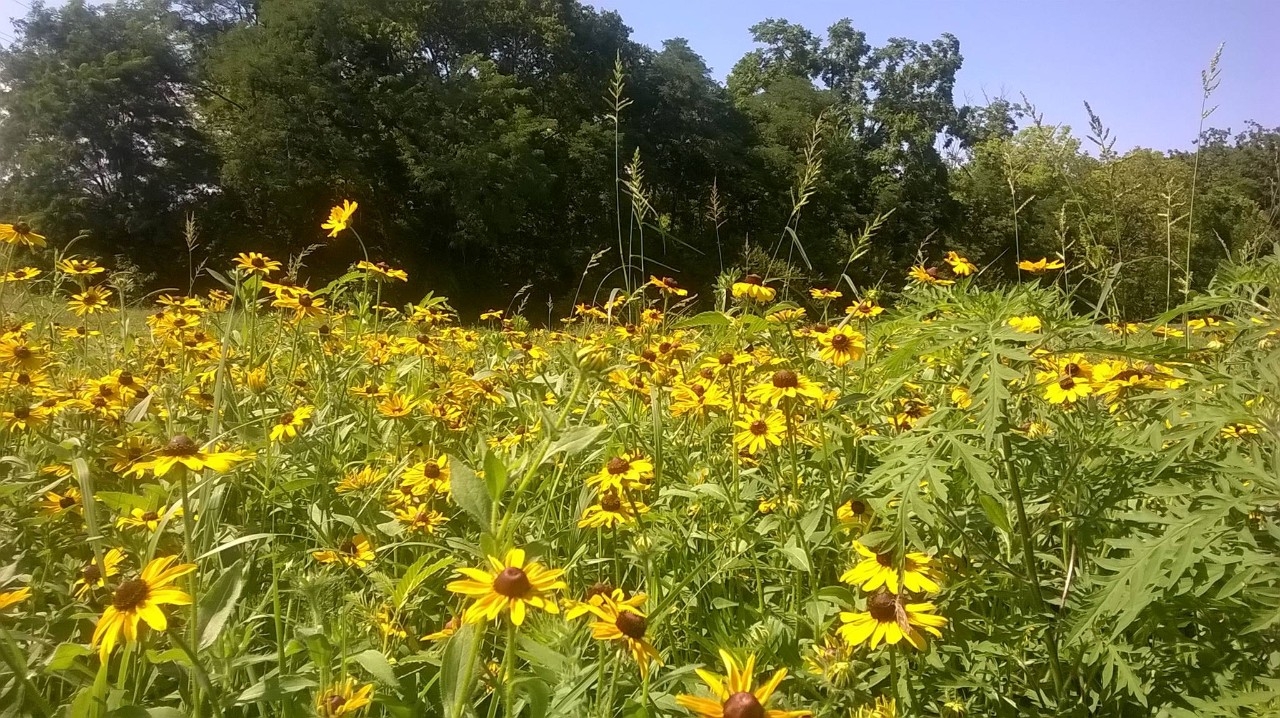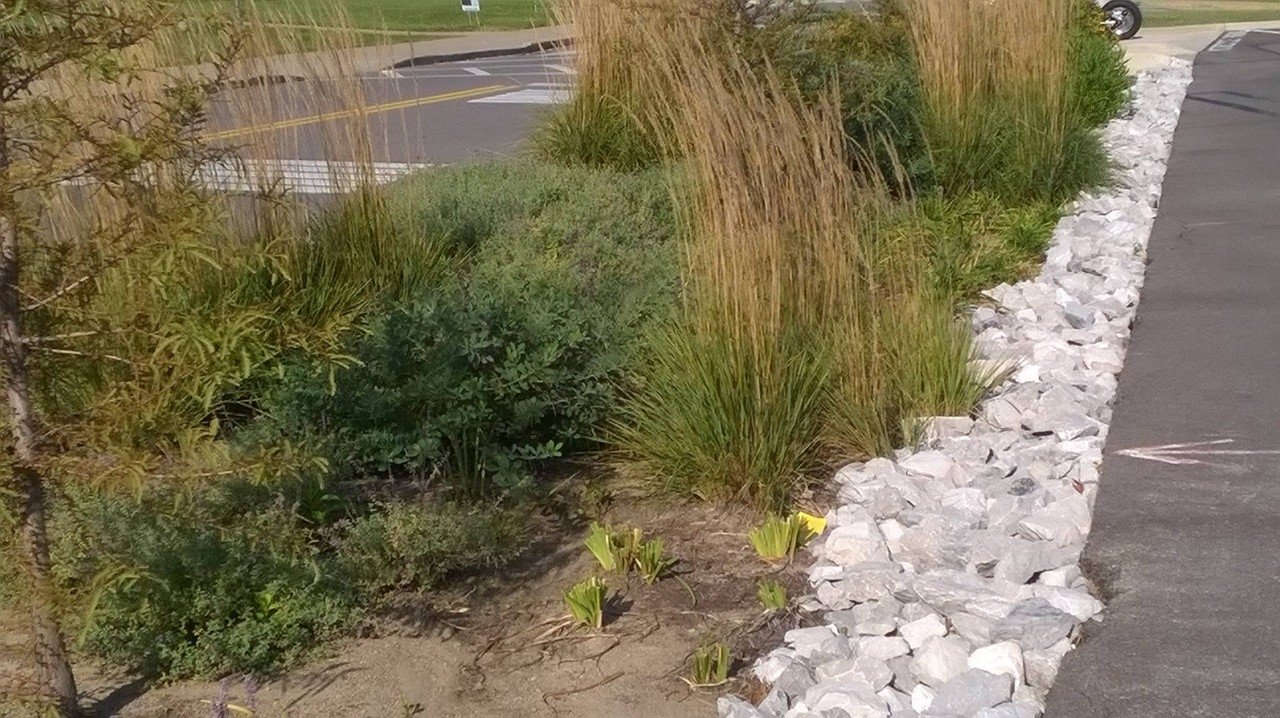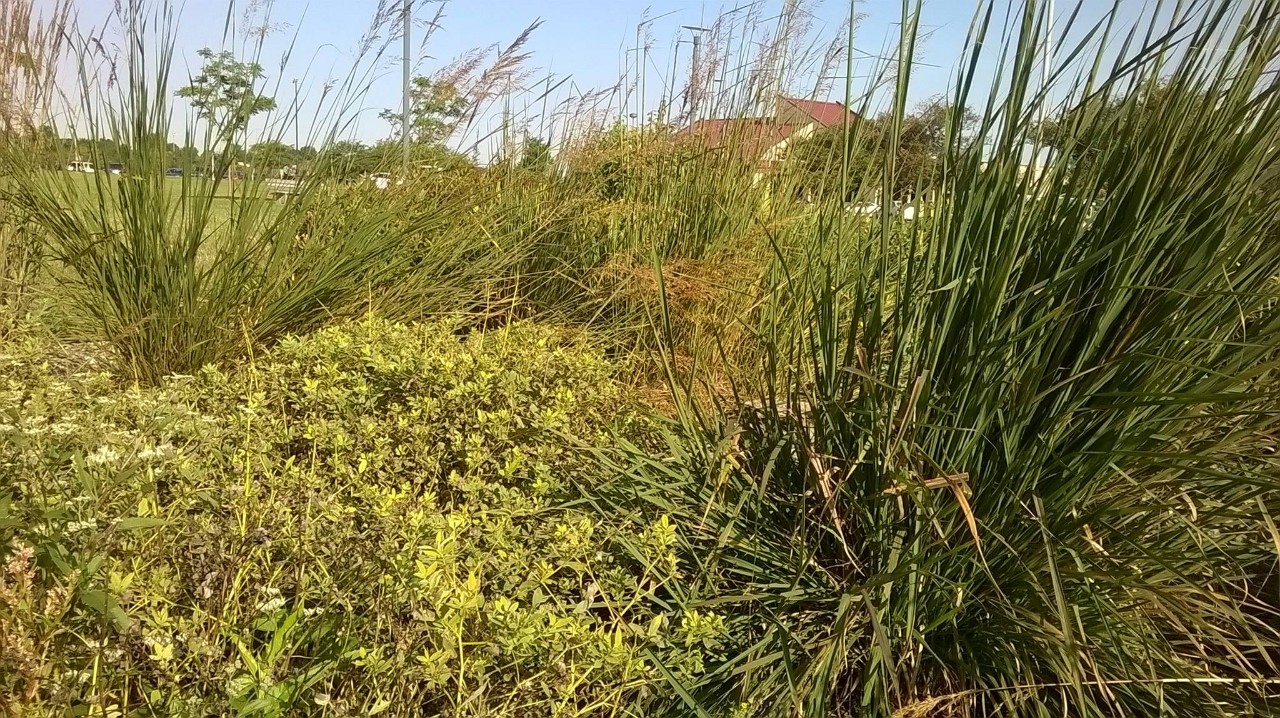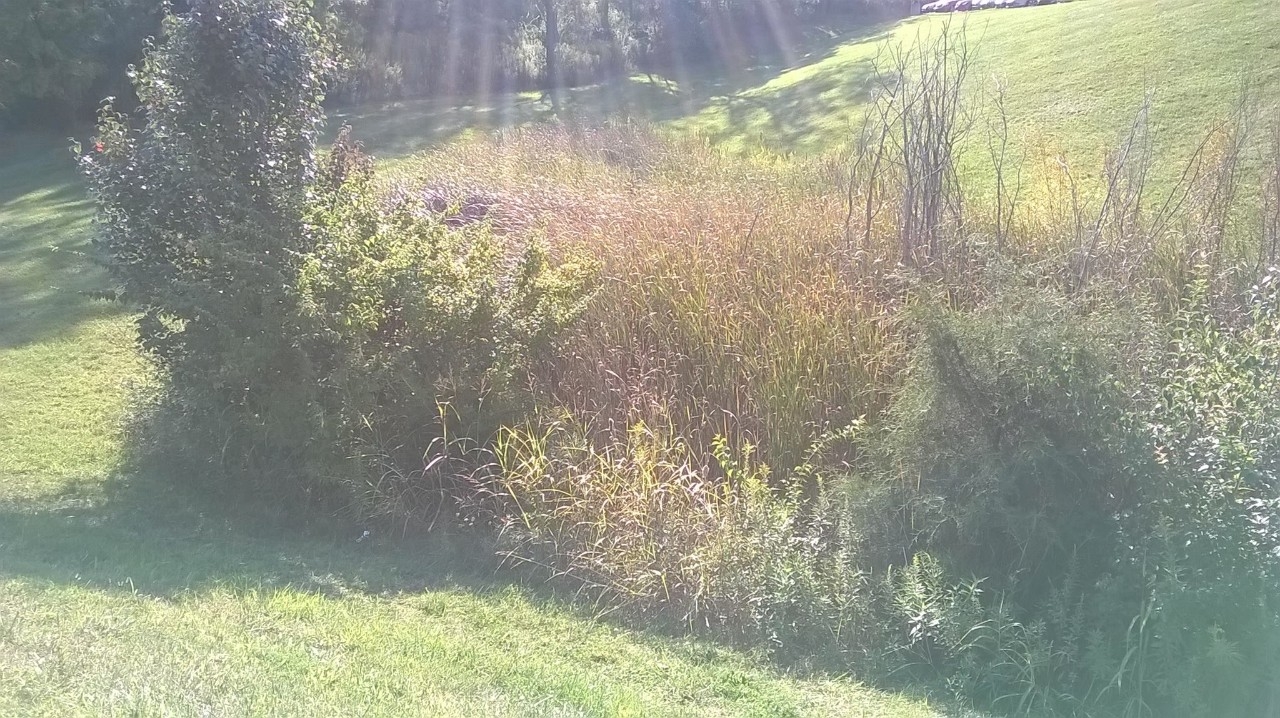


This wildflower garden, located between the NKU Community Garden and Honors House, is home to a variety of different wildflowers that have taken flight recently. The area has completely gone back to nature, attracting butterflies, birds, and many insects. The advantages of growing wildflowers are endless, but wildflowers are integral in supporting dwindling populations of native pollinators, and ultimately their growth supports and benefits human populations and the environment.
In the image (left) you can see many black eyed susans growing uninhibited.



This bioswale on campus, located at the edge of the parking lot next to the Baptist Campus Ministry, is designed to remove silt and pollution from surface runoff water in order to avoid contaminating local tributaries. Bioswales often require use of engineered soils and are sometimes deeper than rain gardens because they are made to accommodate higher quantities of stormwater from large areas of impervious surfaces.
In the image (right) you can see several varieties of grasses and native plants growing.


A rain garden is a planted depression or a hole that allows rainwater runoff from impervious areas, like roofs, driveways, walkways, parking lots, and compacted lawn areas, the opportunity to be absorbed.
In the image (left) is one of our rain gardens. This particular garden is located between Landrum Academic Center and Boothe Residential Village. Seen here are tall grasses and other native plants which aid in pollution control, flooding protection, habitat creation, and water conservation.


In the image (right) you can see one of our recently established no mow zones. This no mow zone was created by NKU to allow natural areas to once again flourish on campus. By allowing this area to return to its natural state, our carbon footprint is reduced and a habitat is created for native species.
There are now four areas totaling 4.8 acres that are designated as no mow zones:
An area north of the Honors House
An area north of Johns Hill Road and west of University Drive
An area north of University Drive and southeast of Campus Drive
An area southwest of Campbell Drive near the Campbell Drive Substation